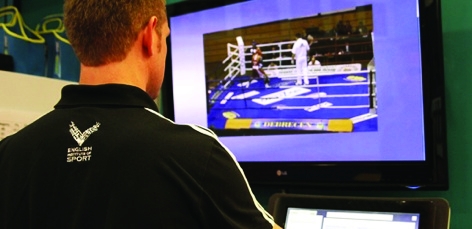The common perception of engineering and sport is that of shiny new bikes, aerodynamic helmets and sleek bobsleds. I often get asked, “isn’t it just the best equipment that wins now, rather than the athlete?” The answer – to me at least – is obviously “no” and I’ve spent my working life working on sports engineering. I’ll explain why.
A few weeks ago I was lucky enough to be invited to a celebration at the Houses of Parliament to celebrate the ‘backroom’ achievements of the engineers and scientists used by UK Sport to help their sports. On the main stage was Amy Williams, UK’s skeleton bobsleigh Gold medalist from Vancouver, along with “Arthur” her trusty sled. The easy headline is one of a single piece of equipment as some sort of magic for winning a gold medal and the project won The Engineer’s Sports Innovation Award in 2010.
Of course, we shouldn’t ignore the part the athlete and coaches at the English Insitute of Sport and the BBSKA (British Skeleton and Boblsed Association) played in the gold medal. The truth behind the technology side is that there is a interdisciplinary team looking at anything and everything that might help get a podium finish. This team is made up of UK Sport’s elite Innovation Partners including engineers at Sheffield Hallam University, aerodynamicists at Southampton University and manufacturers at BAE Systems.
Since budgets are limited, the question is always asked, ’What can we do to help which will give the sport the biggest bang for our buck?’ The answer is rarely a new sled or a new bike and the best job title in sport gives a clue to the answer: Head of Marginal Gains (also known as British Cycling’s Matt Parker). Technology in sport is about a summation of small advances, quite often in unrelated areas. For example, much of our current work for UK Sport is about performance analysis where we monitor the ebbs and flows of performance and the effects new coaching, tactics, nutrition, strength and conditioning and of course new equipment.

Over the last two years we have developed an award winning system in conjunction with the English Institute of Sport in Sheffield called iBoxer. The system uses a series of cameras to monitor boxers’ movements in the ring, which is fed directly to a series of touchscreen monitors in the gym. The athletes then go over the footage between bouts in order to analyse and improve performance, define fight strategy and gain a better understanding of their opponents’ tactics. Once the athlete has completed a three-minute sparring round or training session they can come out of the ring and get immediate video feedback on the aspects important to the session. The iBoxer system also stores the judges’ scores and videos for thousands of bouts, which can easily be searched using a laptop or touchscreen PC.
The system is unique in world boxing and has been well received by the boxers, which has been using performance analysis for some time to help inform strategy and tactics at major championships.
Dr Scott Drawer, head of research and innovation at UK Sport, put it succinctly when he said: ’Our work sets out to help our athletes and their coaches learn faster than their international opposition, and this is a great example of where increasing knowledge and understanding of the sport can give our athletes a real performance edge.’
We’ve now developed similar systems for a dozen other sports including taekwondo, gymnastics, skeleton bobsled, athletics, diving and swimming. Sadly, I can’t yet tell you about these just yet as in sport, knowledge and understanding is where the real power lies; knowing how we are performing now and how even the smallest intervention can improve performance is the key. Roll on 2012!





Nanogenerator consumes CO2 to generate electricity
Nice to see my my views being backed up by no less a figure than Sabine Hossenfelder https://youtu.be/QoJzs4fA4fo